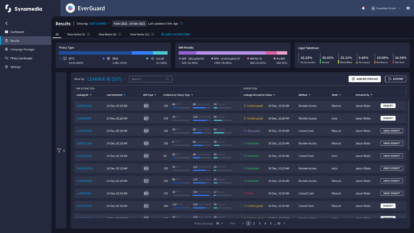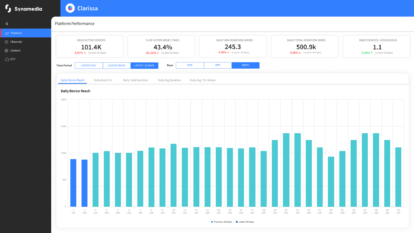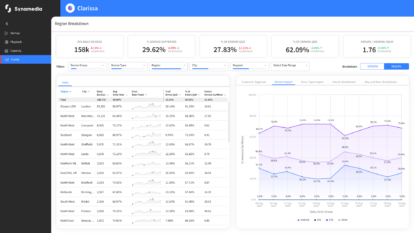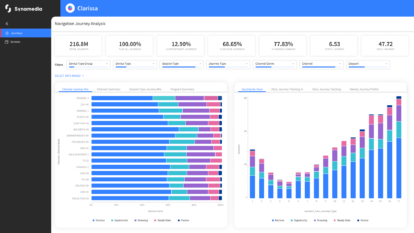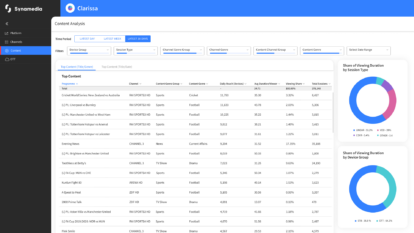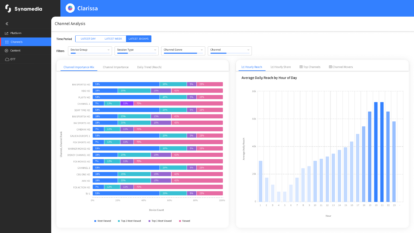I might be biased (I’m definitely biased) but I think we’ve only scratched the surface of how a cloud DVR service can enrich the viewing experience.
There’s a huge opportunity for the best video providers to anticipate a major shift in audience behavior—that before too long, people will spend most of their time watching content that found them.
Here’s why.
As I’ve written previously, there was a lightbulb moment for audiences when the first DVR devices launched.
“You mean I can *pause* live TV?”
To many, it felt like magic. But underneath that novelty, the functionality held a much deeper appeal: viewer agency.
Suddenly audiences were less beholden to someone else’s schedule, and freer to create viewing experiences that worked for them.
And this fundamental re-orienting of the viewing experience around consumer convenience goes far deeper than simply recording.
The latest advances in cloud DVR technology—and the future developments on the horizon—are really about increasingly sophisticated time-shift capabilities.
So let’s take a minute to see how far we’ve come—and why there’s another big change on the way.
Cloud DVR and the power of convenience
When all this started, TiVO was the ‘go-to’ DVR for many homes. But the first iterations were single tuners—viewers couldn’t record one channel while watching another.
So when Scientific-Atlanta brought the first dual DVR tuner to market integrated with the service provider, demand unsurprisingly skyrocketed—to the point where some viewers actually paid for both simultaneously.
But interestingly, audience appetite wasn’t necessarily tied to immediate consumption.
One survey at the time asked viewers “How many tuners is enough?”.
22% of respondents answered “five tuners or more”—something way beyond the capabilities of household devices at the time, and certainly more than virtually every home had any experience of.
It wasn’t that viewers were regularly recording four shows at once (with a spare tuner for live viewing). It was that viewers didn’t want to be constrained: they wanted reliable access to the content they loved without restrictions.
cDVR offerings today can more readily accommodate that kind of headroom. But the ability to simply record more shows only scratches the surface of the innovation opportunity on the table.
With cloud recording, time-shift capabilities of tomorrow’s most competitive cDVR offerings won’t simply deliver more content—they’ll intelligently curate it.
The new cDVR horizon: curation
Before cloud, the DVR experience was mostly subscriber initiated—viewers had to actively select content to consume on their own schedule. There was the concept of predicting what I wanted to watch with “Wish List” by TiVo, but as so eloquently articulated by many a sitcom of the day, the results were not always in line with interests.
While concepts like Tivo’s “Wish List” are still incredibly popular today, cloud recommendations and curation take things to a whole new level. Furthermore, there’s a huge analytics opportunity for video providers to start adding value to cloud DVR services through intelligent, predictive discovery.
Operators are already building sophisticated profiles for their subscribers—based on their viewing habits, their demographic information, their transaction history and other third party data.
New cDVR offerings can map individual subscriber interests to the most relevant parts of their inventory and more effectively predict and promote content to help viewers discover shows they either weren’t aware of or otherwise might have missed.
Say I’m a huge Bruce Springsteen fan (and I am). Though I regularly search my TV for Bruce content, my (diminishing) free time rarely overlaps with The Boss’s appearances.
If my video provider knew about my Bruce-mania (which they should), they could execute a keyword search across their whole inventory to return any shows that feature “Bruce Springsteen” in the description or metadata. So right there search history is augmented with viewing history to get a better picture of my interests.
One channel is soon going to show his recent documentary, “Western Stars”—so my cDVR automatically records it and presents it to me in a content discovery swimlane just for me to consume at my leisure, (or not).
Skipping to the best parts
Let’s say Bruce is also appearing for an interview and performance on a late night talk show to promote a new tour (Bruce if you happen to read this, a new tour would be great).
The cDVR could also intelligently “clip” those segments—by image or audio recognition, or even by analyzing audio-to-text—so I wouldn’t have to skip to where Bruce appears.
It could even present those clips in my content discovery swimlane— instantly connecting me with the content experiences I care most about.
There are endless possibilities like this—to not only connect viewers with content they love, but to deliver that in a pure streamlined experience that removes anything extraneous from the experience.
Endless last chances
Time-shift capabilities that actively enrich the cDVR aren’t the sole domain of advanced, intelligent curation.
Simpler features like catch-up TV and start-over functionality can be just as powerful in helping viewers emancipate themselves from the rigid constraints of appointment viewing.
But something like last-chance TV is a great example of what’s possible when you combine the simplicity of time-shift with the dynamic curation possibilities enabled by user-analytics.
For programs that are available in a “Look Back” scenario, operators can curate the shows that are about to expire through traditional catch-up availability and present them to subscribers to record for a more convenient time.
Providers can dynamically curate a “Last-Chance TV” swimlane—effectively delivering personalized content experiences for an entire household.
A shift in mindset
To win in the age of Infinite Entertainment, video providers have to do more than offer incredible content—and that in itself is a high, expensive barrier to entry.
You also need to ensure that you’re getting as many eyeballs on the content as possible to increase your ROI. And the best way to do that is to remove all the friction from the viewing experience and the discovery process.
Before too long, people won’t watch content they have to find. They’ll be too busy engaging with content that found them.
And that’s the real cloud DVR opportunity here—to deliver a service that’s about curation as much as it is about recording.
Your guide to cDVR
Wherever you are in your own cDVR journey, there’s never been a better time to learn more about it—or to take some time to consider how you’re going to deliver on the ever-growing demands of your consumers.
To learn more about how you can take content curation to a new level, book a Cloud DVR demo today.
About the Author
JT Taylor is responsible for developing and driving all product marketing, sales enablement, and thought leadership initiatives for two areas of the Synamedia portfolio: Synamedia Go, an open, modular, and flexible streaming video platform; and Gravity, a device management platform that can simplify the management of subscriber’s whole home network. When he’s not wearing his marketing hat, JT is an avid golfer and pseudo musician.

